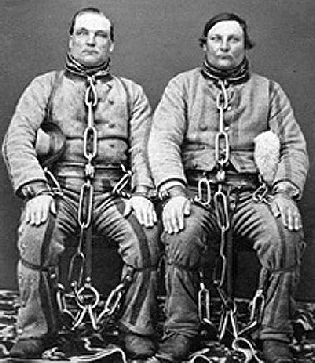
Knife fighters Antti Rannanjarvi and Antti Isotalo The Age of the Knife Fightersby Lani K. Thompson IntroductionThe Age of the Knife Fighters was a unique period of Finnish history that began around 1790 and ran around 100 years. During this time, the murder rate increased sharply, with approximately 2000 murders committed in the Southern Ostrobothnian region, or around 10 murders per year per 100,000 people. The increase in crime only affected this one area. Violent crime in the rest of the country was relatively low during the same time. Other crimes like assaults, robbery and gambling were also high in Southern Ostrobothnia. ReasonsMany reasons have been postulated for the high number of homicides during this time. Veli Verkko attributes it to the violent genetic nature of the Southern Ostrobothnian people, along with their inability to tolerate alcohol. Kustaa Vilkuna, an ethnographer who wrote The Knife Boys, Money Weddings, and The Pietists, theorizes that the custom of selling alcohol at weddings, in order to raise money for the bride and groom, gave rise to the knife fighters. Yrjö Alanen argued that the Southern Ostrobothnians started fighting with knives when Romany arrived in the region and fought in the market place. Other theories revolved around the 1808-09 war with Russia. Russian grain became cheaper than Finnish grain so domestic grain was sold to make alcohol. Because Southern Ostrobothnia was so isolated, the people there kept the alcohol they made and drank it themselves. Other theories revolved around the custom of holding inter-village fights, the low standards and cowardice of government officials, the custom of wearing knives as part of the folk costume at festive occasions, and attempts by the peasant class to free themselves from orthodox thinking. “Going ‘Round the Villages”Knife fights occurred at social events like dances and weddings. They also broke out during card games, in drinking places, at market or home, or in the road. However, the majority of knife fights happened when gangs of young men traveled from farm to farm or from village to village. This custom of “going ‘round the villages” started out as a way for young people to get together to sing and dance, but it became a way for them to acquire liquor. Young men would decide to “go ‘round the villages” after they’d already gathered for a dance, a funeral, an auction or some other social event. Gangs would descend on a farmhouse and either ask for or demand a drink. Refusing could mean being assaulted or killed, so “hosts” began selling drinks to their guests. In addition to alcohol, gangs looked for excitement and would go around breaking windows, throwing rocks and logs at houses, pounding on doors and generally causing a disturbance. WeaponsIn his book, The Knife Fighters, Heikki Ylikangas examines the methods and weapons the knife fighters used to commit murder. Surprisingly, according to him, knives were only used about16 percent of the time. The weapon most commonly used was a “wooden striking instrument”, like a piece of fencing, firewood, or a stake. Other weapons included crowbars, pothooks, pokers, axes and weighted whips. Some killings were even done by unarmed men who suffocated, punched or kicked their victims to death. FightersMost knife fighters were young men, and gangs were usually formed by the sons of farmers and by hired hands. Crofters and soldiers also joined gangs. Farmers didn’t usually join but, when they did, they usually became leaders because of their higher social position. Victims of gang killings varied, depending on the social rank of the gang leader. Individual knife fighters who committed murder, were more likely to be farmers, and their victims were more likely to be from the same social class as they were. As the Age of the Knife Fighters progressed, relations between farm hands and other groups, including farmers, sons of farmers and crofters began to deteriorate and both killers and victims were more likely to be farmhands. The Age Of The Bad MenSoldiers played an important role during this time period. They were one of the first groups to start fighting with knives. They were an independent group, not answerable to a single master as other groups were. Because it was hard to find men to serve in the army, it wasn’t easy to discharge soldiers who abused their positions. These ‘bad’ soldiers became models for some of the worst crimes. The term puukko-junkkari, or knife-fighter, was originally a term that people of the time gave to military units that deteriorated into bands of criminals. Knife fighters were highly condemned, and most people of the time period referred to this age as the Age of the Bad Men. Final ThoughtsIf the knife fighters were so terrible, and by all accounts they were, why do people admire them, and sing songs about their horrifying deeds? In Stubborn and Silent Finns With ‘Sisu’ In Finnish-American Literature, Raija Taramaa writes about the Finnish knife, or puukko as a symbol of a free man, and a way for him to defend his honor. Finns place a high value on freedom and honor. Perhaps, when they sing songs of Antti Isotalo and Antti Rannanjärvi, they do not applaud the crimes these men committed. They raise a toast to the spirit of freedom and independence that the knife fighters have come to symbolize. References
|